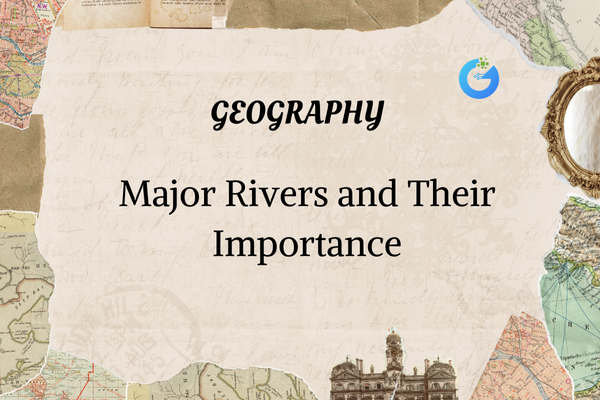Introduction – What Makes a King “Great”?
In history, not all kings were remembered just for wearing crowns and sitting on thrones. Some were remembered because they did something special—they built great cities, made new laws, protected their people, or spread peace and learning. These were the kings who changed the course of history and earned the title of “great.”
From Chandragupta Maurya’s powerful empire to Ashoka’s message of peace, and Samudragupta’s support for art, these rulers left behind more than palaces—they left a legacy.
expert-led History classes – visit our website to learn more
Chandragupta Maurya – The Founder of an Empire
Chandragupta Maurya was the first ruler to unite most of India under one empire—the Maurya Empire. With the help of his wise advisor Chanakya, he built a strong army, a good system of administration, and a capital city at Pataliputra.
He overthrew a cruel ruler and brought law, order, and organization. He also started using tax collection and a spy system to govern such a large empire. He laid the foundation of what would become one of India’s greatest empires.
Ashoka the Great – The King Who Chose Peace
Ashoka was Chandragupta’s grandson, and he began his rule as a powerful warrior. But after a terrible war in Kalinga, Ashoka was filled with sorrow seeing the loss of life. He then chose the path of non-violence and Buddhism.
Ashoka became known for spreading the message of peace, kindness, and respect for all living beings. He built pillar edicts, supported Buddhist monks, and sent missionaries to Sri Lanka and beyond. His rule is remembered as a golden period of ethical governance.
Samudragupta – The Poet King
Samudragupta, from the Gupta dynasty, wasn’t just a brave warrior—he was also a musician and poet! He expanded the Gupta Empire through many successful campaigns, earning him the title “Napoleon of India.”
But he also supported art, literature, and learning. He helped make the Gupta period a time of peace, progress, and beauty. This is why historians call it the Golden Age of India.
Harshavardhana – The King Who Loved Books
Harsha ruled northern India after the Guptas. He was a kind and educated king who cared about the welfare of his people. He was also a patron of literature and education.
He wrote plays, supported universities like Nalanda, and welcomed scholars like the Chinese traveler Xuanzang, who visited his court and praised his rule. Harsha helped keep learning alive during difficult times.
Core Concepts – What You Should Know
Understanding key words helps us remember what made these kings so special. An Empire is a large area ruled by one powerful king—like the Maurya Empire. Kings often issued edicts, which were messages carved on stone to share rules or wisdom, like Ashoka’s pillar inscriptions.
The Golden Age is a term used for peaceful, prosperous times when art and knowledge flourished—like during the Gupta period. Behind many great kings stood wise advisors—Chanakya helped Chandragupta rise to power. And a patron is someone who supports arts and learning—both Samudragupta and Harsha were known for this!
| Concept | Meaning | Example |
| Empire | A large area ruled by a single ruler | Maurya Empire |
| Edict | A message or order carved on stone or metal | Ashoka’s Pillar Inscriptions |
| Golden Age | A time of great peace, learning, and creativity | Gupta Period |
| Advisor | A wise helper who guides the king | Chanakya (to Chandragupta) |
| Patron | Someone who supports art, music, or learning | Samudragupta and Harsha |
FAQs – Curious Questions Kids Might Ask
Kids often wonder what made these kings stand out. Here are some simple answers to help you understand their greatness:
Q1: Why was Ashoka called “Great”?
Because he gave up violence, followed peace, and spread kindness through Buddhism. His rule was based on compassion and fairness.
Q2: Who was Chanakya?
He was a teacher and advisor who helped Chandragupta become a powerful ruler. His strategies and book Arthashastra are still famous.
Q3: What was the Gupta Golden Age?
A time during the Gupta Empire when art, science, and literature flourished. It was a peaceful and creative time.
Q4: Did these kings fight wars?
Yes, but some like Ashoka stopped fighting and focused on peace later in life. Others used wars to bring unity or protect their kingdoms.
Q5: How do we know about these kings?
From old books, coins, carvings, and records by travelers like Xuanzang. These sources help historians learn about ancient times.
Fun Facts About Great Kings
History can be fun too! Did you know these cool things about the kings you just read about?
- Harsha wrote a play called Nagananda, which is still read today by scholars and historians.
- Ashoka’s Lion Capital, which stood on top of his pillar, became India’s national emblem—you can see it on currency and official documents.
- Samudragupta loved music and is shown holding a veena on ancient coins—how rare is that for a king!
- Chanakya wrote the Arthashastra, a powerful guide on how to rule a kingdom, deal with enemies, and manage money.
- Nalanda University, supported by kings like Harsha, attracted thousands of students and teachers from all over Asia—it was one of the world’s earliest universities!
Conclusion – What We Learn from Great Kings
Great kings aren’t remembered just for winning wars. They are remembered for what they built, what they taught, and how they cared for their people. They remind us that true greatness comes from making life better for others.
Their actions helped shape ancient India into a land of wisdom, strength, and culture—a legacy that still inspires us today.








